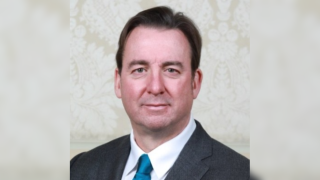Back in 2019, Germany’s leading mobile network operators announced plans to eliminate up to 6,000 so-called white spots across the country – areas where there is no mobile reception. Furthermore, the Telecommunications Act (TKG) was revised to provide BNetza (Federal Network Agency) the option to oblige telecoms companies to provide a higher network level in every region of Germany. The TKG also reaffirmed the federal government’s goal to provide the rural and remote regions with fast and stable mobile and network connections.
The pandemic has driven increased remote working, education and healthcare across the country. Germany’s rural areas equate to 23% of its population. Therefore, demand for fast and stable connectivity outside of traditional cellular coverage areas is urgently needed. Industry and agricultural farming concentrated especially in rural areas argue that the lack of connectivity is preventing their businesses from growing.
Rural areas need the digital age too
The federal government is investing about €1.1 billion in expanding the network at 4,400 locations that currently have no coverage – i.e. dead spots. The 2019 Mobile Communications Strategy set out additional measures to address white spots, grey spots and 5G expansion.
These are commendable and much-needed actions. However, if you are a farmer running a large agricultural business or a remote IT professional having moved from Hamburg to a small village, a federal or local government strategy, however good, will not be fast enough to address immediate needs. Germans in rural areas need good connectivity, and they need it now.
MNOs and satellite
Mobile Network Operators (MNOs) are focusing on exactly that and teaming up with partners from different industries to provide rural connectivity using a mix of technologies. For example, a big MNO in Germany is now using the Intelsat Cell Backhaul managed service to bring 4G LTE broadband coverage rapidly and cost-efficiently to some of its most rural coverage areas.
Satellite operators such as Intelsat have been focusing on developing a solution that can help MNOs of any size expand 4G or 5G broadband coverage or build resiliency into their existing networks. The solution is aimed at meeting demand and bringing connectivity into areas previously considered unreachable or unprofitable.
Satellite providing cheaper 5G in rural areas
5G promises to be a game-changer with its ability to unleash the potential of technologies such as AI and IoT, connect everything and bring exciting advances for consumers and sectors alike – including automotive, logistics and farming, among others. Yet, expanding 5G networks, especially in rural areas, doesn’t come without challenges. One of the biggest challenges we hear about from MNOs is the high cost associated with building and maintaining terrestrial backhaul solutions, such as fibre, over long distances to multiple new sites – leading to low ROI. It’s even costlier to do this in difficult terrain. If you factor in month-long delays that usually come with deploying terrestrial networks in rural or remote locations, the business case becomes even harder to justify.
Advanced, space-based technologies have capabilities that are not available via land-based solutions and that will be essential to realising 5G’s full potential. This is why, more so than any previous generations, 5G will rely on numerous technologies, including satellite. More specifically, satellite backhaul is often the only practical and cost-efficient means for providing life-changing connectivity in rural or hard-to-reach areas.
An emerging European trend
Satcos and MNOs are teaming up globally in the deployment of their 2G/3G/4G networks in the more difficult or more costly to reach areas. The cell backhaul solution is already available in Japan where more than 3000 3G/4G cellular towers in difficult-to-reach areas of the country are connected to the network using Intelsat’s fleet of High Throughput Satellites (HTS). This service has been up and running since 2019 and the implementation in Europe is designed around this success.
Satcos are already in discussion with several MNOs to begin pre-commercial testing and expand the reach of this initiative.
Länder authorities should be drivers of change
What is needed to replicate the success of this initiative and speed up the uptake in Germany is policymaker support. Germany has an ambitious expansion plan for digital infrastructure. Its politicians are well aware of the exodus of its population to rural areas and the difficulty of living and doing business in dead spots. Policymakers, particularly at Länder-level, need to recognise that other access technologies, including satellite communications, are required to meet their connectivity policy goals.
Länder regulators will be familiar with the issue of dead spots across their territories and interested in cost-effective ways of addressing it. Cell backhaul may well be the technological solution they have been waiting for. What remains to be seen now is how quickly it can be implemented, and which Länder will be the leaders in championing 100% coverage in their Land, and, eventually, in Germany.





